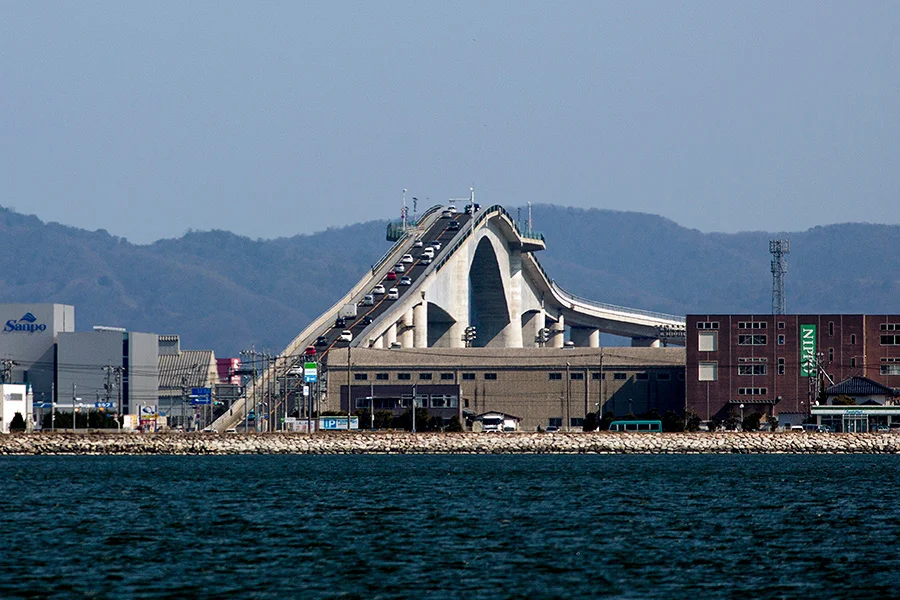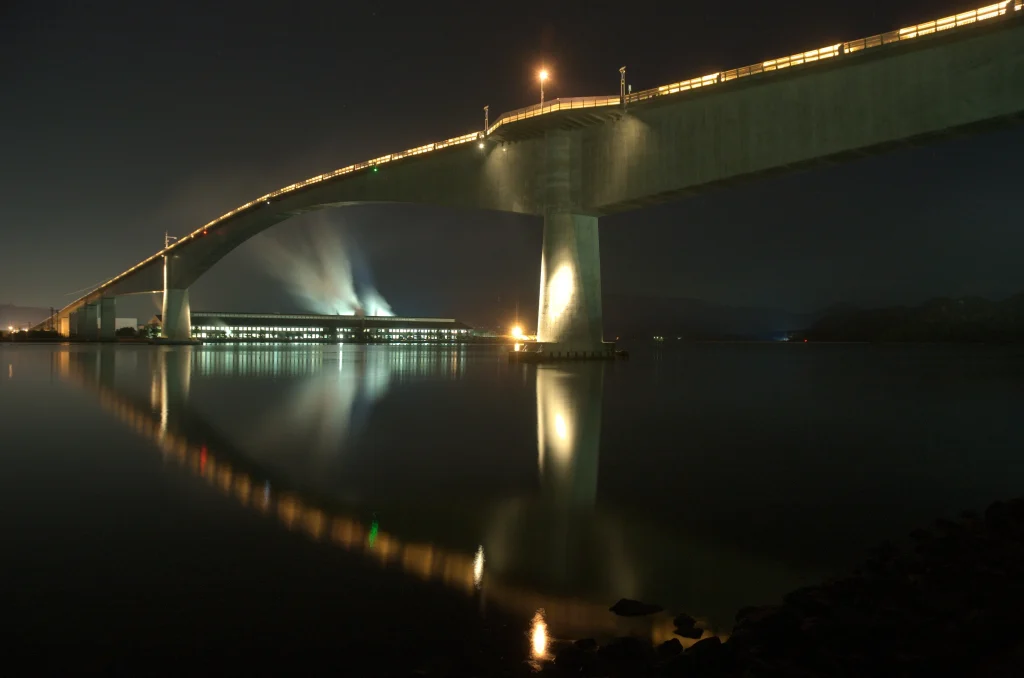One of the world’s most impressive engineering feats is this bridge in Japan that’s so steep it appears to defy gravity
Published on Nov 02, 2025 at 4:24 PM (UTC+4)
by Henry Kelsall
Last updated on Oct 30, 2025 at 9:56 PM (UTC+4)
Edited by
Emma Matthews
An incredibly impressive bridge in Japan is an engineering achievement that looks so steep that it defies gravity.
The Eshima Ohashi Bridge is one of the most impressive engineering feats in the country, and it connects the cities of Matsue and Sakaiminato.
It stretches across Lake Nakaumi, and the gradients on both sides are incredibly impressive, but the design isn’t just for show.
Its design was influenced by what passes underneath it, but it also had to ensure the traffic above flows as smoothly as possible.
DISCOVER SBX CARS: The global premium car auction platform powered by Supercar Blondie
Why is the bridge in Japan so steep?
If you’re looking at those images and wondering how that’s possible, you’re not alone. The gradients are 6.1 percent on one side and 5.1 percent on the other, and generally speaking, traffic bridges are less than 5 percent.
Photos and videos can distort how steep it is, but even with that considered, those are impressive gradients.
Linking the Japanese neighborhoods of Matsue and Sakaiminato, the bridge has to allow for large ships to safely pass underneath.
That is why the designers had to come up with such a steep and imposing design.

The gradient rises sharply on the Matsue side, before cresting and dropping suddenly on the other.
It then takes on a more subtle profile and looks more like a typical bridge over a waterway.
The bridge section itself is only 1.4 miles long, and it is open to traffic 24 hours a day.
This is a stunning feat of engineering
Before the Eshima Ohashi Bridge, there was a drawbridge.
However, traffic was prevented from moving over it if a boat passed underneath for seven to eight minutes.
Something better was needed, hence the impressive new structure that opened in 2004.
Telephoto lenses can have a profound impact on how steep it looks.
The compression effect from a lens, especially from Daikon Island, greatly pronounces the slope.
But there is no denying how impressive an achievement its construction was.
In total, it cost 22.8 billion yen to construct, roughly equivalent to $147,864,247.

So it wasn’t cheap by any means.
Clearly, however, it needed to be built to ensure neither the ships nor the traffic above them were disrupted on their travels.
Over 20 years on from its construction, it still serves a vital purpose. And looks amazing.
Henry is a content writer with nearly ten years experience, having written for various publications since 2017. Qualifying with a Sports Journalism degree from Staffordshire University, Henry loves all things automotive but has a particular soft spot for classic Japanese cars and anything Lancia. He also has a curious passion for steam locomotives.




